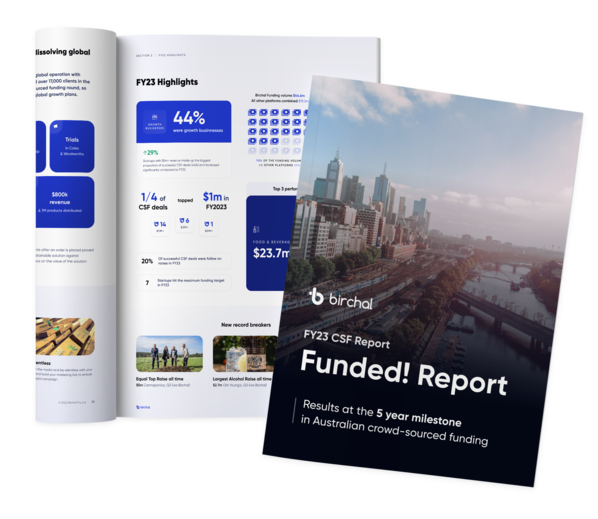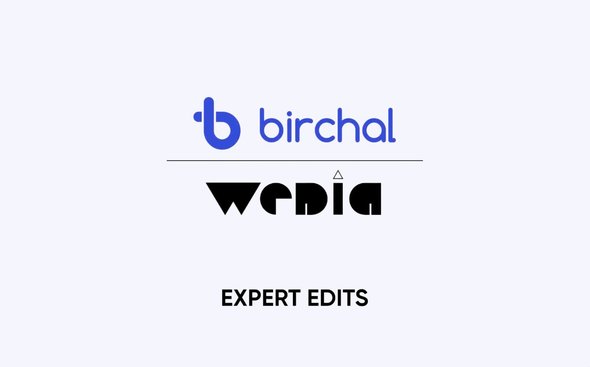EXPERT INSIGHTS
The rundown on the R&D Tax Incentive
How it works and how to claim it

EXPERT INSIGHTS
The rundown on the R&D Tax Incentive
How it works and how to claim it
The rundown on the R&D Tax Incentive, how it works and how to claim it
Startup funding is a challenge faced by all founders. When seeking investment, it is typically money that takes some work to convince others to part with. Not so with the R&D Tax Incentive.
It is available to businesses each year, and you can claim and up to 43.5% of eligible R&D expenses from $20,000 to $150 million, towards development of new products and services.
With 15 years as a specialist, Standard Ledger R&D Tax Incentive expert John Nixon explains in this Expert Insights article how it works, how to claim it, and why startups should be looking at this now!
With over 30 years of experience in innovation (specialising in engineering, technology and ICT sectors) at Standard Ledger, John exercise his skills in assessing eligible R&D activities, quantifying R&D claims, and assisting with AusIndustry reviews. He also assist companies to access government and other grant programmes.

John Nixon
R&D Tax and Grants Specialist, Standard Ledger
1
What is the R&D Tax Incentive and how does it work?
It's a major source of funding for startups and scale ups across Australia, every year. Yep, if you're eligible, it's available every single year and it's an additional funding source to help drive your business goals forward.
The R&D Tax Incentive (RDTI) is administered via two government agencies – AusIndustry and the Australian Taxation Office (ATO).
It's based on self-assessment, so you need to determine if you're eligible before you apply (more on that in questions 4 and 5 below). From there, it’s a two-step process:
Step 1 - Describe your R&D projects/ activities in an application lodged with AusIndustry within 10 months of the end of your financial year (usually 30 June).
If approved, you’ll receive a registration number. This doesn’t mean your claim is guaranteed; it just means you can submit it.
Step 2 - Summarise your eligible expenses in an R&D Tax Incentive schedule. include your registration number and submit the schedule with your annual company tax return (or have your startup-savvy accounting firm do it for you).
Then you either receive cash back at tax time or reduce the amount of tax you’d otherwise have to pay (hence why you sometimes hear the RDTI referred to as an ‘offset’).
2
How much can you claim?
Generally, you must claim at least $20,000 of eligible annual expenses, and there is a $150 million cap on claims.
Companies can apply for up to 43.5% of eligible R&D costs if they have less than $20 million in annual turnover.
If your turnover exceeds that, you can still apply but the ‘offset’ percentage depends on both an ‘R&D intensity’ measure and your tax rate (which is a bit complex to go into here).
3
How do you get the money?
That depends on your tax position. Assuming your annual turnover is under $20 million, if your company is profitable, your R&D claim could reduce the tax you’d otherwise have to pay by 18.5%. But if you have enough
tax losses (which is often the case if you’re a pre-revenue startup), you could receive a cash refund of up to 43.5% of your eligible R&D expenses, typically two to four weeks after lodging your company tax return.

Get the latest industry insights and market trends
For the latest results in Australian crowd-sourced funding including top raises, market conditions, performing categories and biggest crowd pleasers. A must read for businesses and investors alike!
4
Are you eligible for the R&D Tax Incentive?
There are two types of eligibility. First, your business and its activities need to be eligible. You should definitely consider applying if you:
Are developing (or planning to develop) a unique, non-trivial software,hardware, engineered or manufactured product, process or service
Can describe these developments as a series of experiments with unknown outcomes from which you have learned along the way
Have spent at least $20,000 on eligible R&D expenses in the last financial year, or have made a monetary contribution to a Cooperative Research
Centre Program (CRC), or engaged a registered Research Service Provider (RSP) to do R&D on your behalf
It’s also important that the problem you’re trying to solve through R&D is technical, not commercial, in nature. Usually, R&D is required for testing if something is even possible rather than simply testing if your customers would use it. Second, your R&D expenses need to be eligible - see below.
5
Are your expenses eligible?
To be eligible, your R&D expenses need to be tied to either ‘core R&D activities’ or ‘supporting R&D activities’ and you need to be conducting (or planning to conduct) at least one ‘core R&D activity’. That means the outcome couldn’t have been known or determined in advance, is carried out in a scientific way with the aim of generating new knowledge, and is experimental and based on the principles of established science.
It’s best not to assume you can claim the cost of an entire project. In fact, including ineligible activities could lead to your whole claim being rejected, even if it has eligible elements.
Common expenses that are usually eligible include:
Salaries of staff involved in R&D
Contractors involved in R&D and working inside Australia
Costs of equipment and operations related to R&D
Other direct costs, such as R&D related domestic travel
Some indirect costs, such as rent and utilities
Depreciation of assets used for R&D
Feedstock expenditure incurred on R&D activities (though there are some
issues around this, so seek expert guidance)
By contrast, these expenses are not usually eligible: Contractors working outside
Australia and/or not involved in R&D; company set up fees; bank, legal and accounting costs; and marketing and advertising costs.
6
What R&D records do you need?
Record keeping is essential if you want to claim the RDTI, and it actually starts with taking the time to consider if your project is eligible at a detailed activity level, as outlined above.
If it is, you need to keep records to prove it, and it’s a good idea to set a reminder to check in with your record keeping efforts a few times a year.
Aim to keep detailed time-based records as you go that show how you identify and track eligible R&D activities, such as employee time sheets, payroll details and invoices/contracts for any external contractors involved in R&D.
7
What if you need the money quicker?
Consider R&D financing AKA ‘R&D lending’ or ‘forward funding’. This involves specialised financiers lending you the money against your future R&D claim. When the claim is processed, you pay them back. Lenders can stagger the money quarterly throughout the year or provide you lump sum up front based on about 80% of your expected R&D claim.
R&D lenders require documentation including expected R&D expenditure and refund, a support letter, verification of your tax position and sometimes a forward cash flow, so this is not a quick fix to any cash flow problems but it can be life saving for startups.

Discover more about raising
Birchal simplifies funding to help crowds of Australians back innovators and forward-thinking businesses to realise a future they want to share in.
By making it simple, we're growing a community, powering the early-stage growth of fast moving companies.
Even more Expert Insights for raise success!

How to set up your crowd-sourced funding raise for future funding success
Raising capital is a challenge faced by every founder. And while it often starts with the generosity of family, friends and fools, it’s not long before scaling the venture demands a more sustainable funding strategy.
Feature
Apr 5, 2023

The Power of the The Pitch - How to find your crowd
At the heart of every crowdfunding raise is the challenge of finding your crowd, a community of backers and believers that see your dreams in their future.
News
Jan 26, 2023

Top 7 pro tips for winning media in an equity crowd-sourced funding raise
If you have a great story to tell, you have the beginnings of a successful crowd-sourced funding campaign.
Feature
Feb 28, 2023
Even more Expert Insights for raise success!
More about Standard Ledger
Standard Ledger is an accounting and CFO firm specialising in startups and scale ups, with core accounting services, such as bookkeeping, payroll and tax, and growth services including financial modelling, funding, valuations and CFO support. Services are designed to help businesses from startup to stayup.


More about Standard Ledger
Standard Ledger is an accounting and CFO firm specialising in startups and scale ups, with core accounting services, such as bookkeeping, payroll and tax, and growth services including financial modelling, funding, valuations and CFO support. Services are designed to help businesses from startup to stayup.



